A comprehensive guide to the Goethe-Institut's A1 German Exam (Start Deutsch 1)

When I was writing my New Year's Resolutions for 2022, I made 'passing my A1 German Exam' one of my top priorities. German is one of those languages I find really interesting. It all stems from when I lived in Austria for a short period of time in 2017. I only picked up a little German when I was over there but I always wished I'd learned more!
So, at the beginning of this year I started to study German and went on to sit my A1 German Exam three months later in mid-March - I'm very pleased to say that I passed it! I'm going to write about my exact schedule for studying German and the resources I used in next week's blog post to help fellow beginner German learners. I've always struggled with learning languages so trust me when I say, if I can pass the A1 exam anyone can!
In this blog post, I'm going to give you an overview of the A1 German exam and what is involved in the different sections of the exam.

This blog post covers:
- What is the CEFR levels?
- What is the Goethe-Institut?
- An insight into the Goethe-Institut's A1 German exam
- Listening A1 section
- Reading A1 section
- Writing A1 section
- Speaking A1 section
- Is the A1 German exam right for me?
- Exam price in the UK
- Exam grading (pass/fail)
- Exam results
What is the CEFR levels?
CEFR or Common European Framework of Reference for Languages is an internationally recognised system for grading language ability. The CEFR six-point scale ranges from A1 (beginner) to C2 (proficient) levels and is not specific to any particular language. Instead, CEFR can be used to standardise ability across approximately 40 different languages.

What is the Goethe-Institut?
The Goethe-Institut is a German cultural association, which offers and promotes internationally recognised German language learning courses and CEFR (A1-C2) exams around the world. It also encourages international cultural exchange. The first Goethe-Institut opened in Athens in 1952 and the association now spans 158 branches in 98 countries.

An insight into the Goethe-Institut's A1 German exam
The Goethe-Institut A1 German exam for adults, aka 'Start Deutsch 1', consists of four different sections: listening, reading, writing and speaking. Each of these sections have equal value, they are all worth 15 marks out of the overall 60-mark exam. For all sections (except from speaking), you'll write your answers on a seperate piece of paper. The A1 exam tests your ability to be able to introduce yourself and others, your ability to form simple sentences and use common expressions and also, communicate with someone when they speak slowly and clearly.
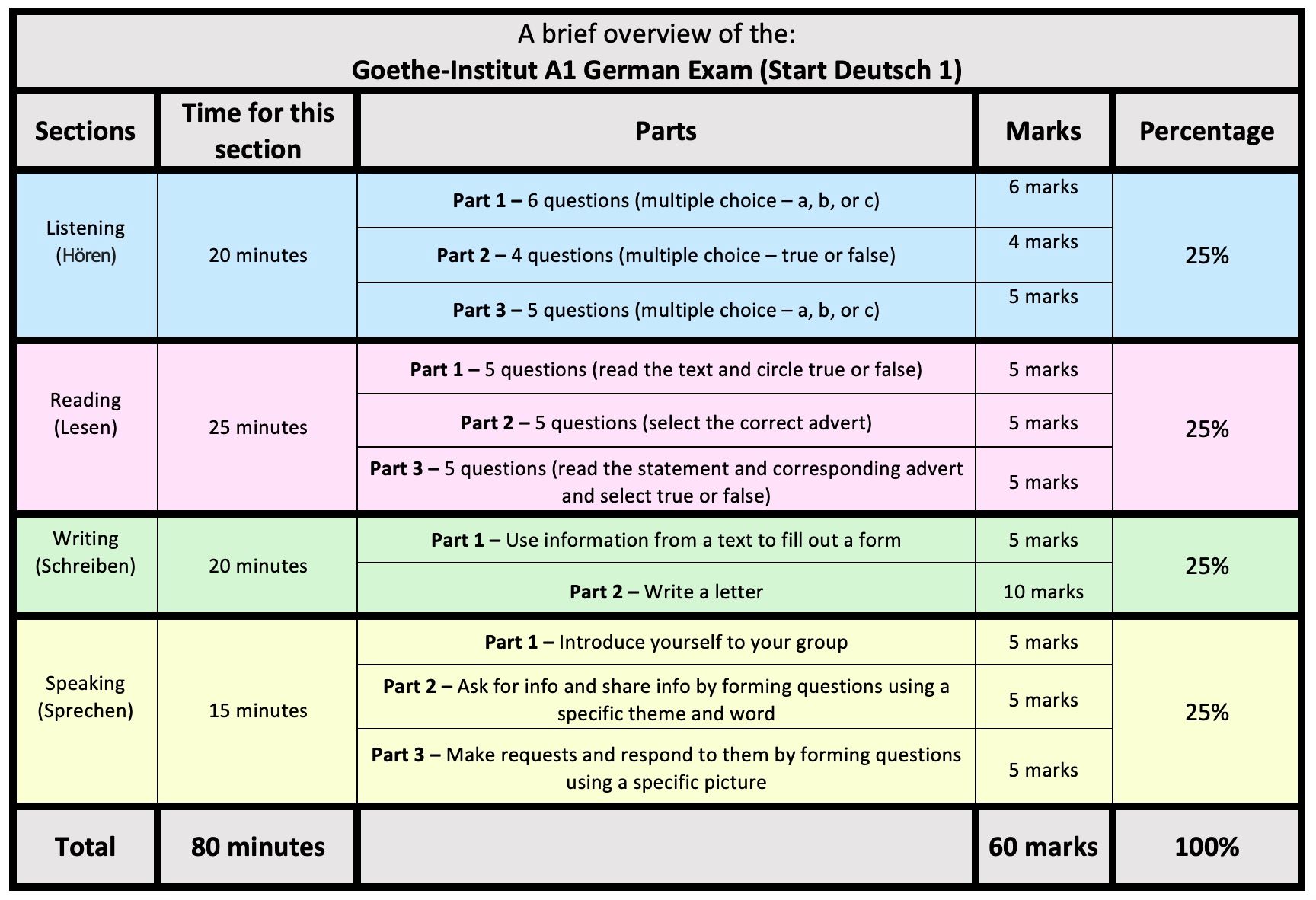
Listening A1 section
The listening, or Hören, section has three parts (Teil). In the exam, you'll be given all the information for each part including how to answer the questions and the amount of times the audio will be repeated, followed by an example (Beispiel) of a question. The listening section is worth a total of 15 marks and lasts 20 minutes.
- Part 1: There are six multiple-choice questions for this part. Each question is worth one mark meaning you can gain a total of six marks. You'll hear the audio for each question two times and you'll need to choose an answer; a, b, or c. For each answer option, you'll also be given a picture prompt to help you out.
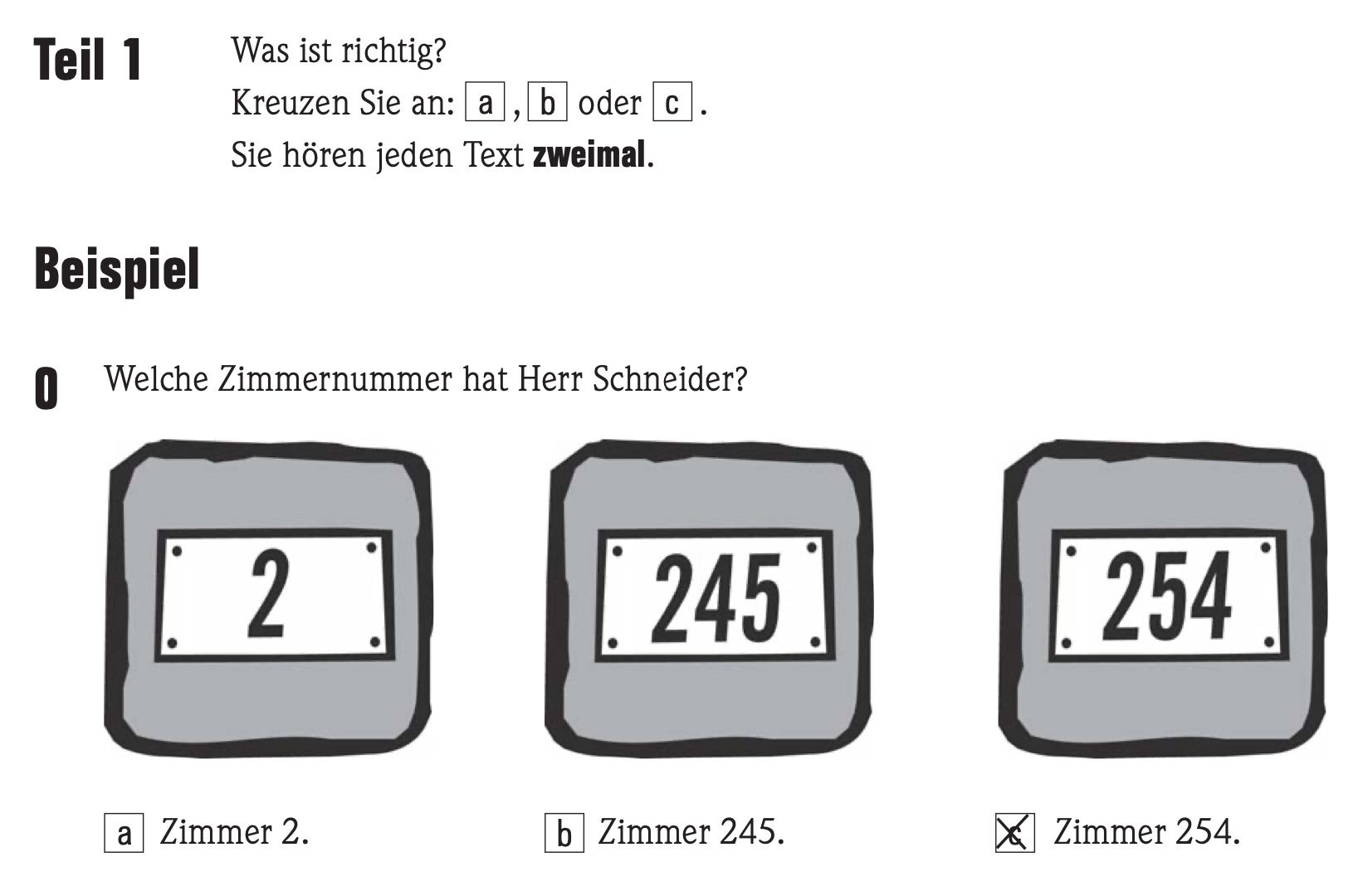
- Part 2: There are four statements for this part. Each statement is worth one mark meaning you can gain a total of four marks. You'll hear the audio for each statement once and you'll need to choose an answer; either true (Richtig) or false (Falsch).
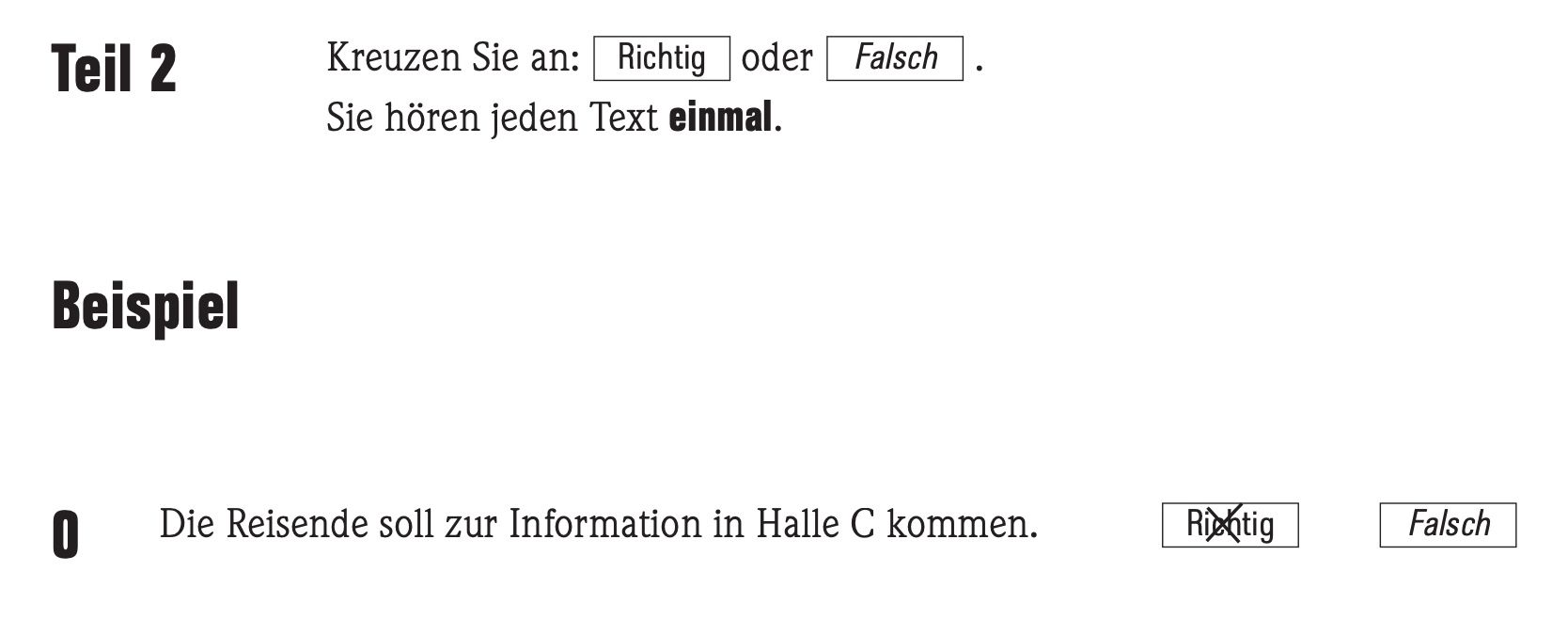
- Part 3: There are five multiple-choice questions for this part. Each question is worth one mark meaning you can gain a total of five marks. You'll hear the audio for each question two times and you'll need to choose an answer; a, b, or c. This part is very similar to the first part of the listening section, however you don't receive picture prompts to help you.
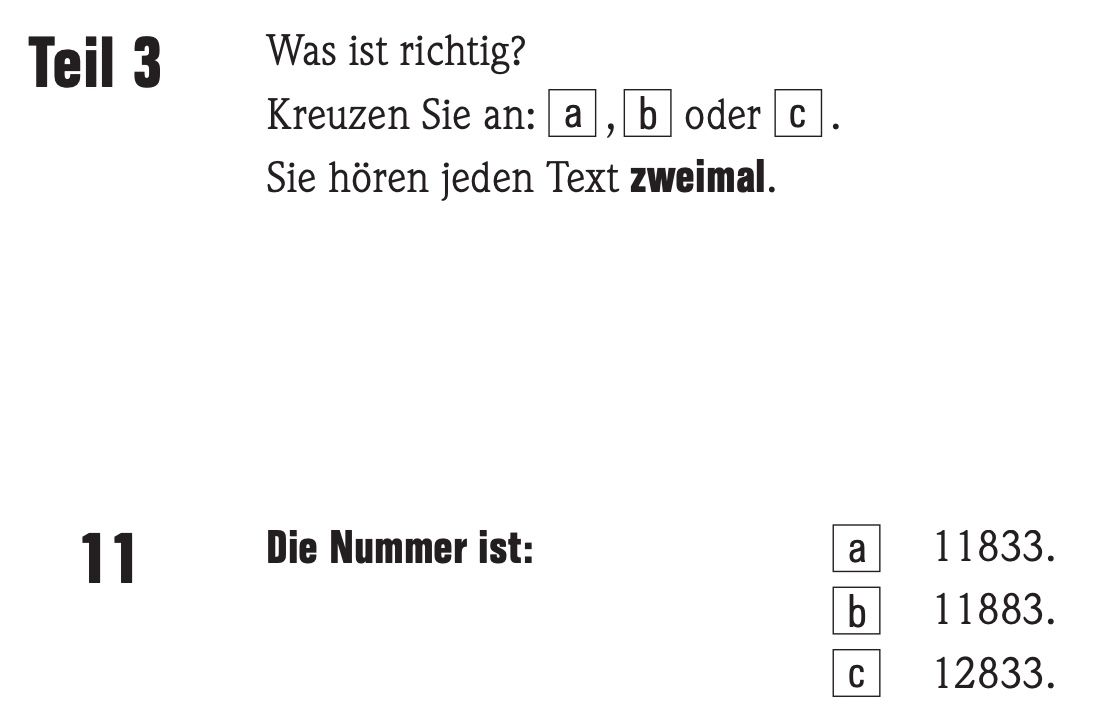
Reading A1 section
The reading, or Lesen, section has three parts (Teil). In the exam, you'll be given all the information for each part including how to answer the questions, followed by an example (Beispiel) of a question. The reading section is worth a total of 15 marks and lasts 25 minutes.
- Part 1: For this part, you'll have to read the text and five corresponding statements, selecting either true (Richtig) or false (Falsch) for each statement. Each answer is worth one mark meaning you can gain a total of five marks.
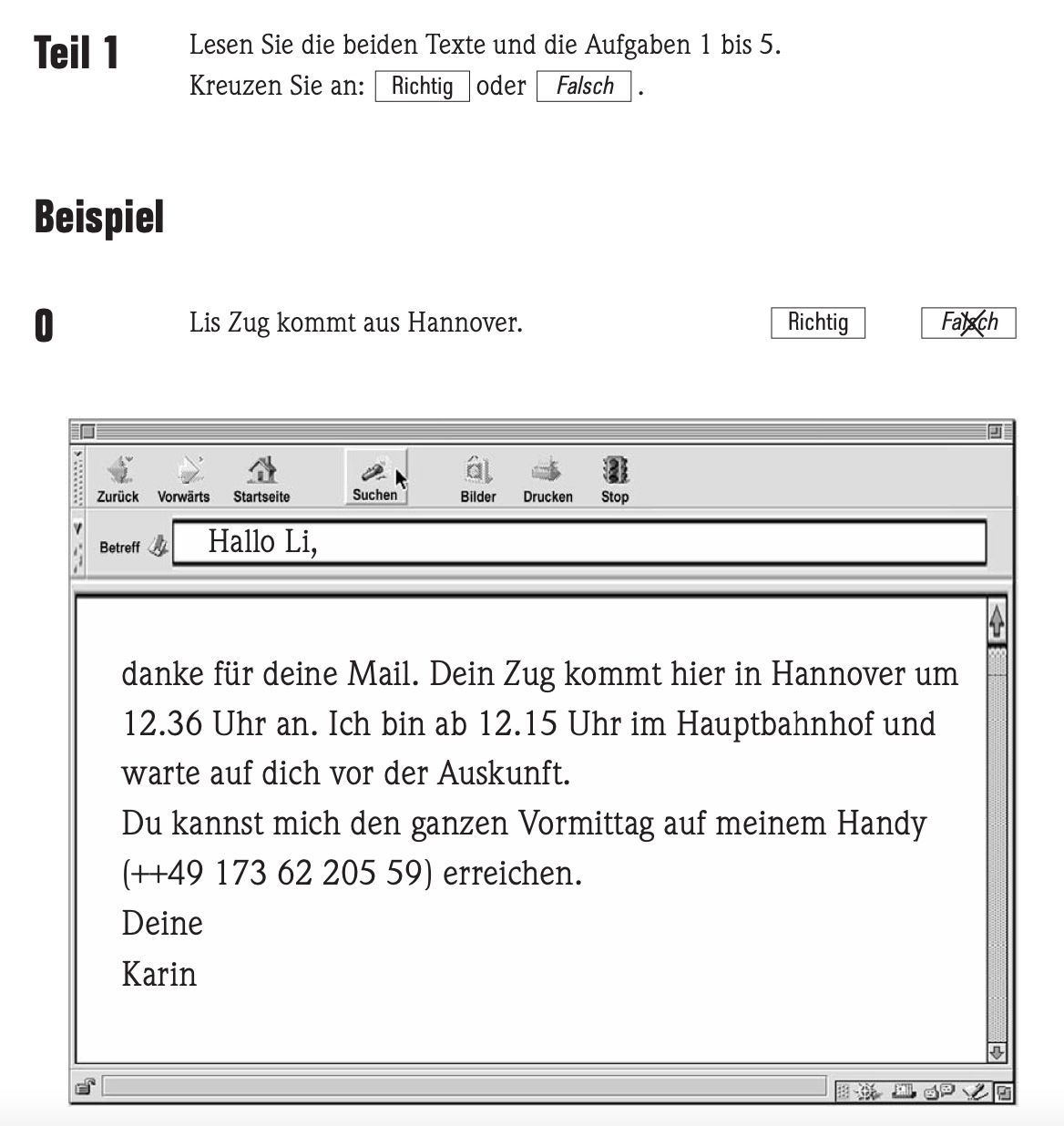
- Part 2: You'll have to read the question or statement and the two corresponding adverts. You'll then have to decide which advert best answers/suits the question or statement. Each answer is worth one mark meaning you can gain a total of five marks.
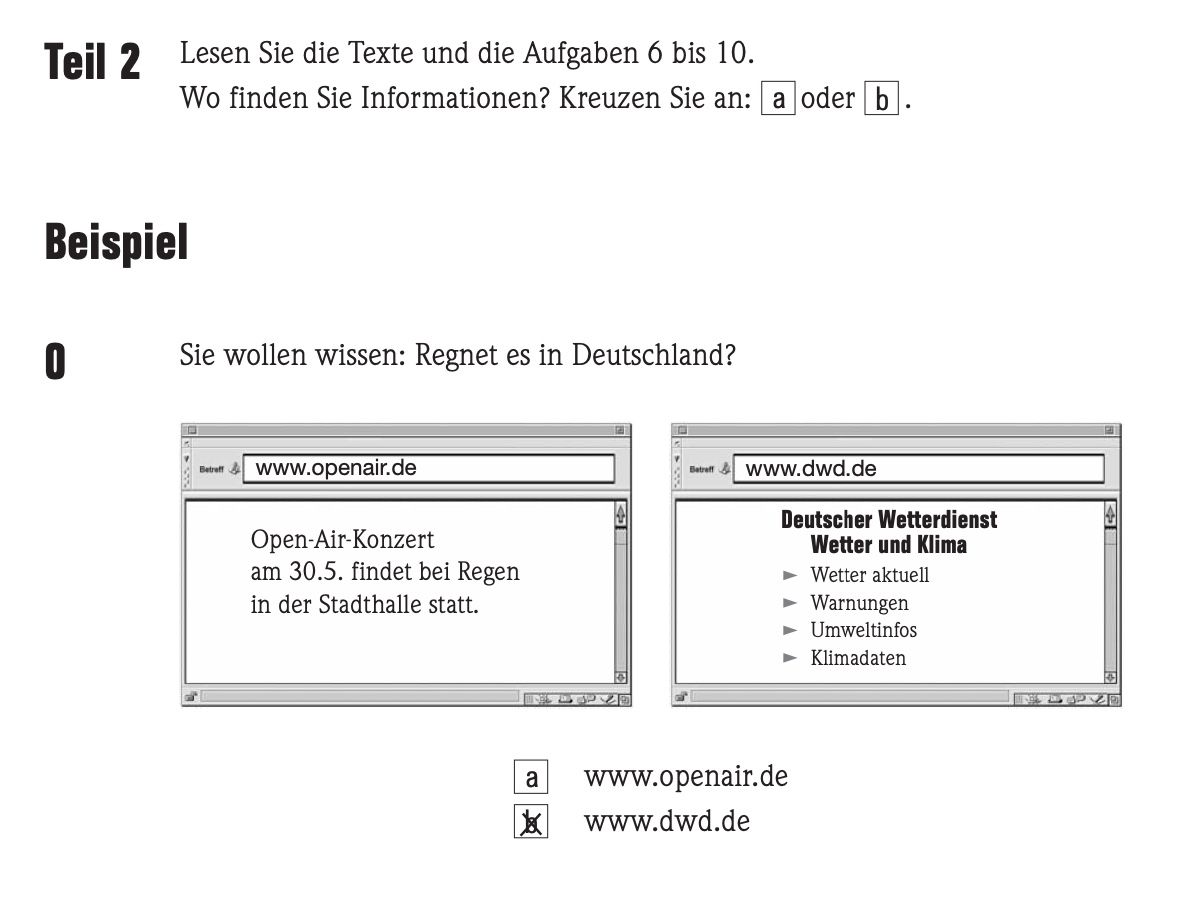
- Part 3: You'll need to read the statement and corresponding advert and select true (Richtig) or false (Falsch). Each answer is worth one mark meaning you can gain a total of five marks.
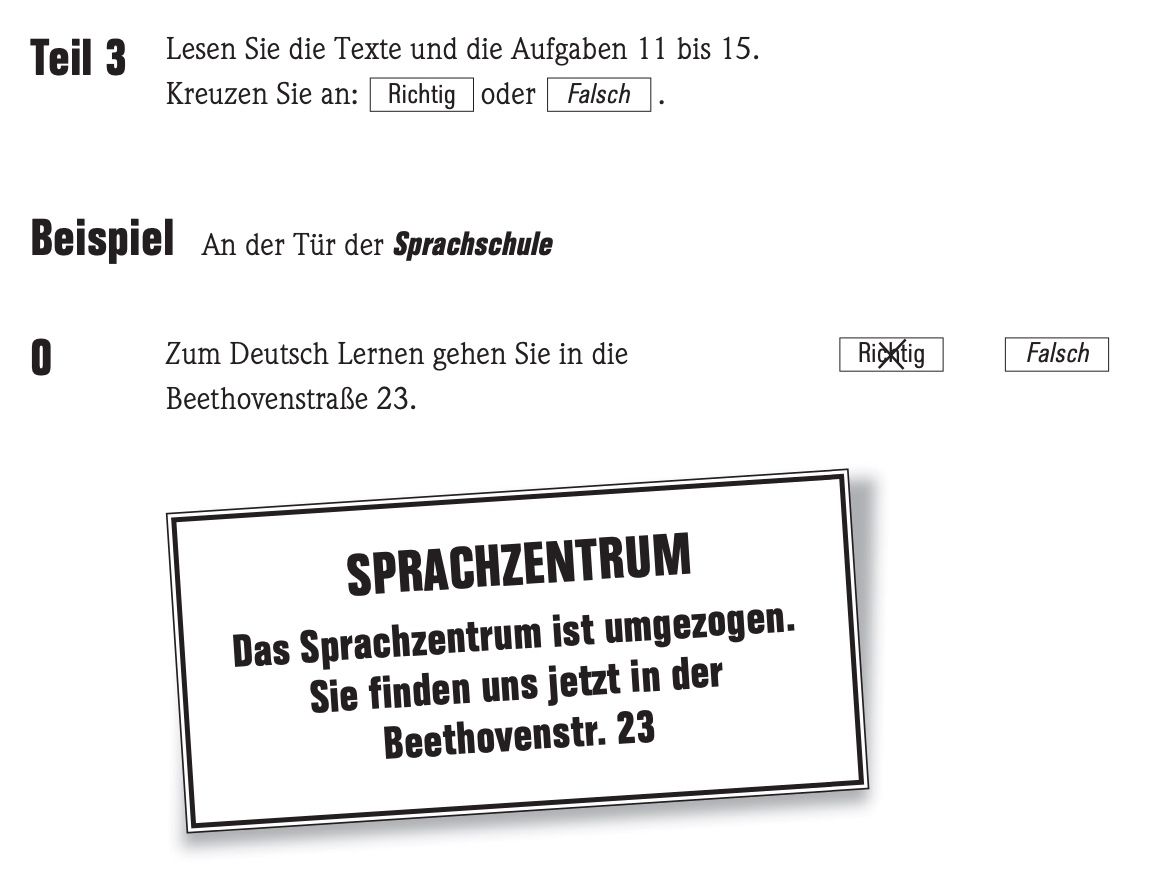
Writing A1 section
The writing, or Schreiben, section has two parts (Teil). The writing section is worth a total of 15 marks and lasts 20 minutes.
- Part 1: You'll need to use information from a text to fill in five answers on a form. Each answer is worth one mark meaning you can gain a total of five marks.
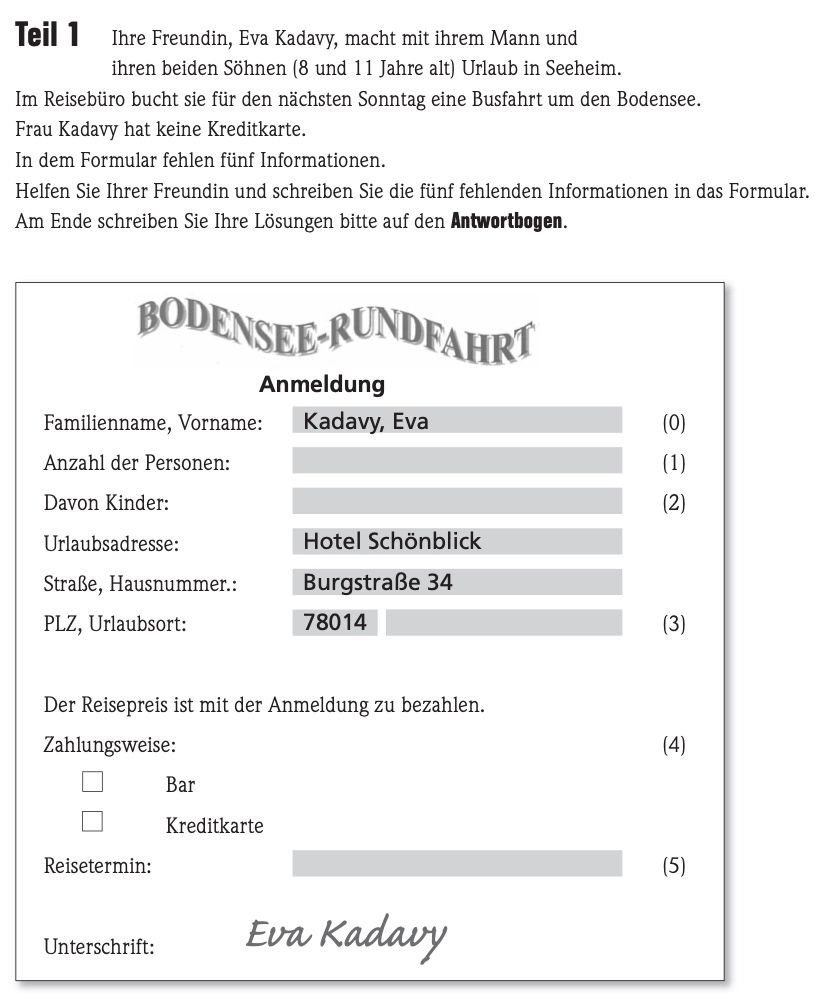
- Part 2: For this part, you'll need to write a text, passage, email or a letter. You'll be given all the information on what it should be about. You'll also be given three statements or questions, that you will need to ensure that you answer or include in your passage. You'll need to write approximately 30 words and this part is worth 10 marks.
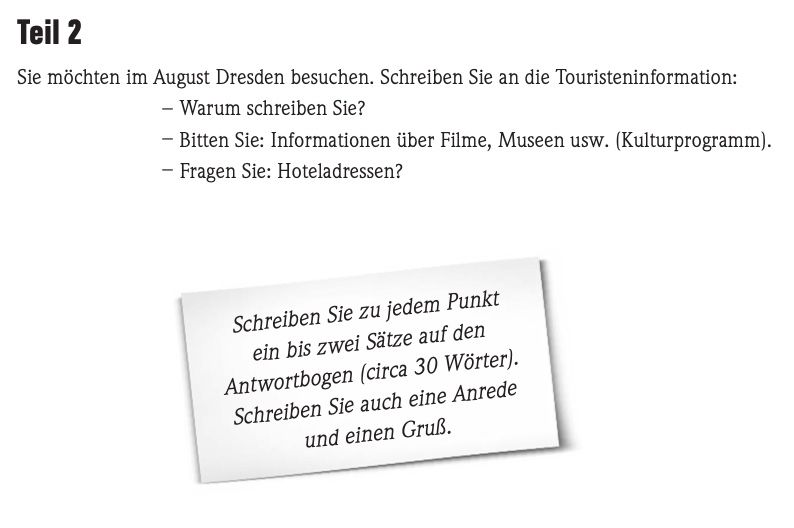
Speaking A1 section
The speaking, or Sprechen, section has three parts (Teil). For this section of the exam, you'll be put into a group. In my group, there was three of us in total (including myself). You'll be asking and answering each other questions based on pictures or word prompts. The speaking section is worth a total of 15 marks and lasts 15 minutes.
- Part 1: You'll need to introduce yourself to your group, using the following prompts. The examiner will then ask you a follow-up question, examples of these include: your phone number, spell a word or your date of birth. This part is worth 5 marks.
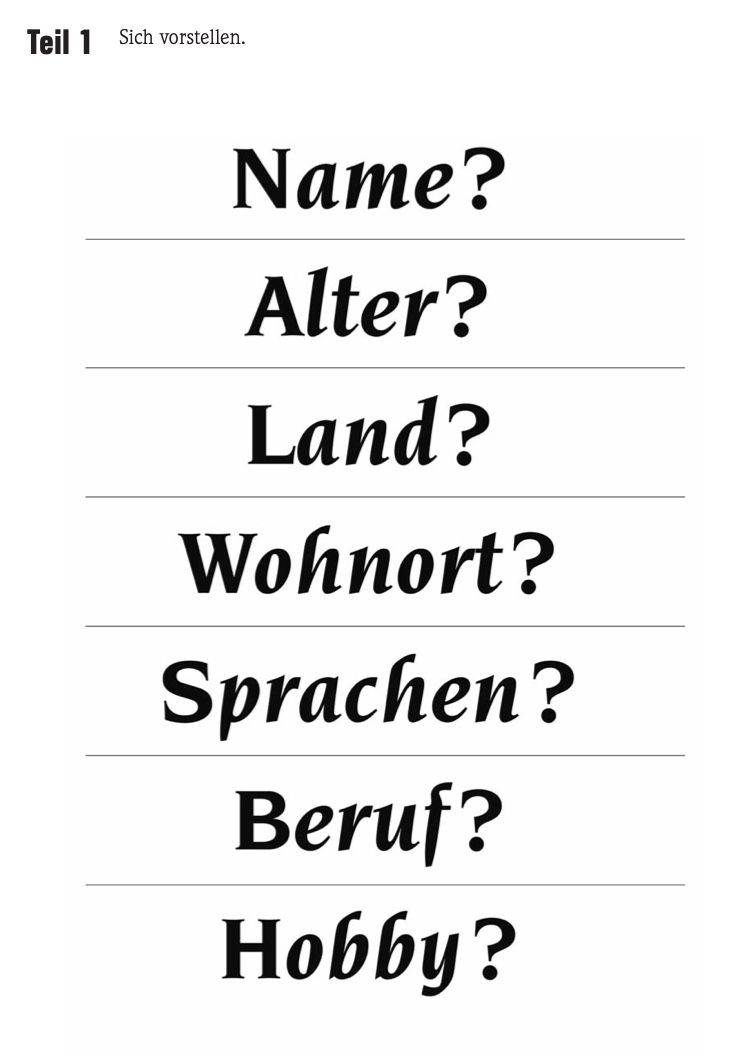
- Part 2: You'll need to ask another member of your group for information by forming questions using a specific theme and word on your card. The theme (Thema) is at the top of the card and the word is in bold taking up the majority of the card. You will get 2-3 cards and have to form a question for each card, another member of your group will have to answer your question in German and vice versa. This part is worth 5 marks.
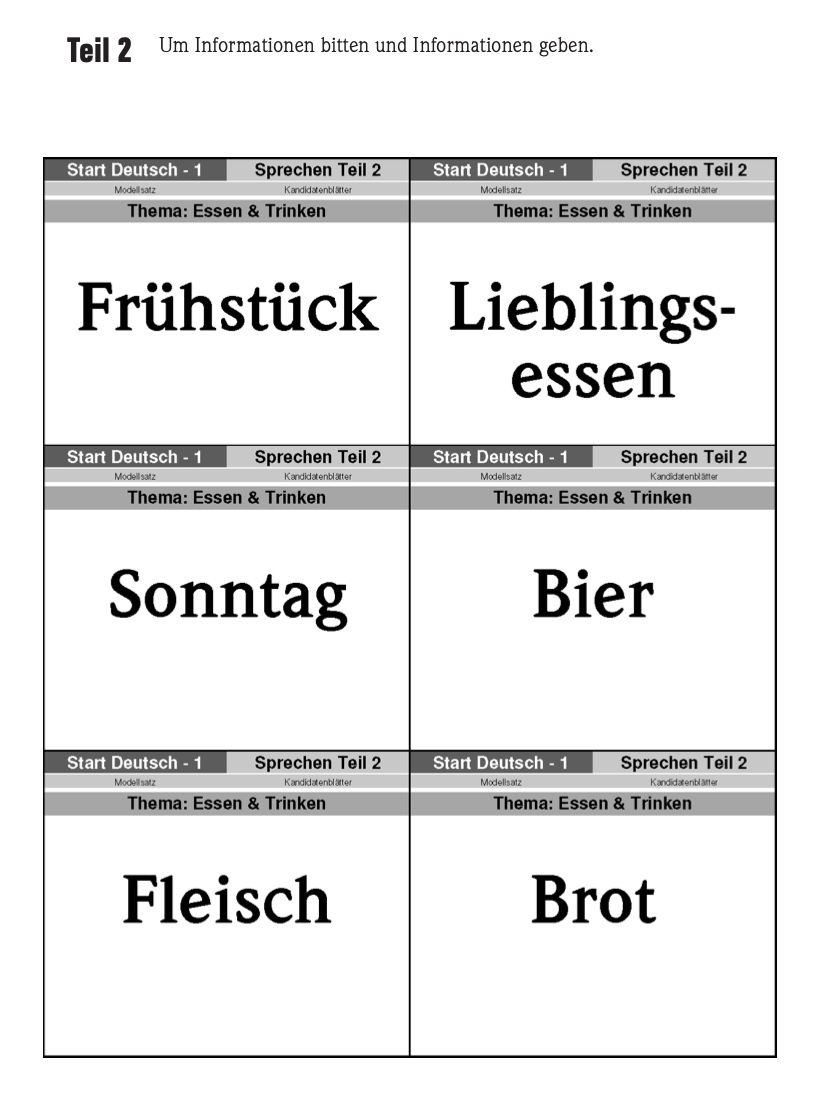
- Part 3: You'll be given a card with an image on it. Using this card, you'll need to make requests by asking another member of your group questions (e.g .Can I borrow your book?) and you'll need to respond to their requests/questions too in German. This part is worth 5 marks.
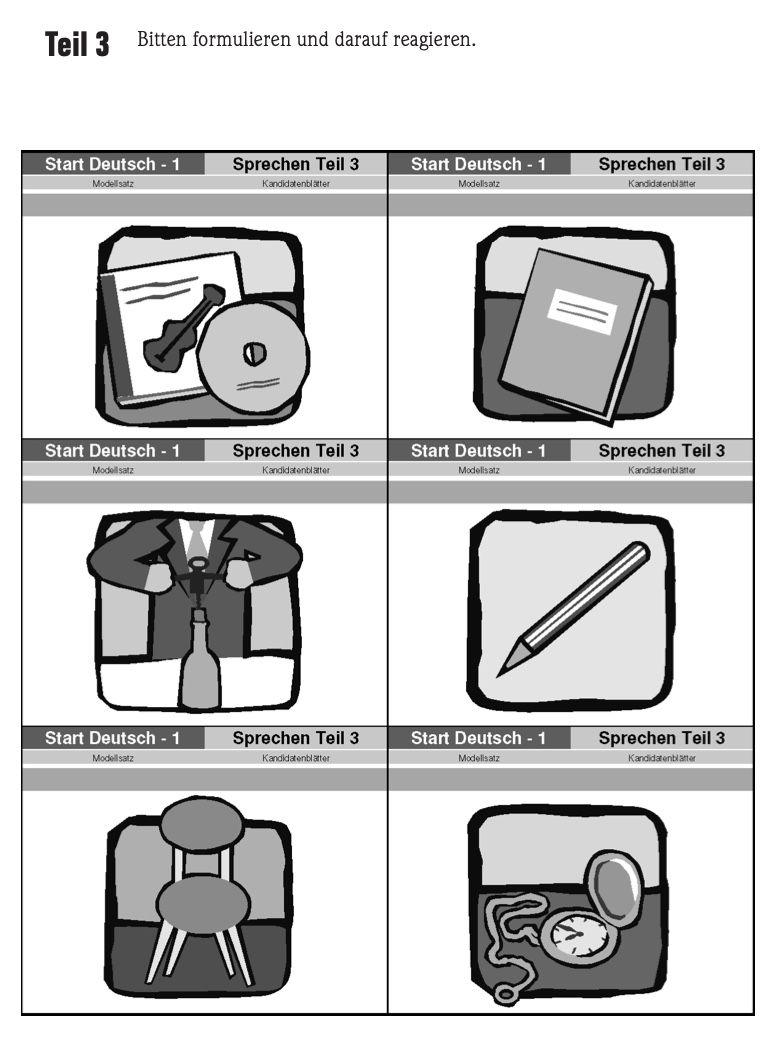
Is the A1 German exam right for me?
The A1 German Exam proves that you have acquired the basic language skills. You may require an A1 certificate for a visa, or for a job or to be able to live within a German-speaking country. None of these applied to me, instead it was just because by having an exam deadline it kept me accountable and motivated to study, which I wouldn't have done otherwise because I'm a huge procrastinator!! You might be the same, maybe you just want to sit the A1 exam to grade your German ability and that's absolutely ok too!

Exam price in the UK
If you decide to do the A1 language course at the Goethe-Institut, you will get a discount on the A1 exam price down to £80. As long as you sit the exam within six months of the course ending. However, if you don't do this course, the price of the A1 exam throughout the United Kingdom is £110. There is pros and cons with taking the course. I chose not to do it as it was quite expensive and instead, just studied using my own materials.
Exam grading (pass/fail)
The exam is marked out of 60, with each section consisting of 15 marks. You need 36 marks (or 60%) overall to pass. If you achieve less than this, unfortunately you will not have passed the exam. However, do not be disheartened if you fail, book another exam for a couple of weeks or months time depending on your readiness and give it another go!
Along with your result, you'll also be given a grade. There are five different grades:
- If you score between 90-100%, your grade is "sehr gut" (very good).
- If you score between 80-89%, your grade is "gut" (good).
- If you score between 70-79%, your grade is "befriedigend" (satisfactory).
- If you score between 60-69%, your grade is "ausreichend" (sufficient).
- If you score between 0-59%, your grade is "nicht bestanden" (not passed).
Exam results
You will receive your exam results about 1-2 weeks after your exam and they will be posted on the Goethe-Institut website. You will also receive an email to indicate when the results are up on the website and this email will give you an indication if you have passed. About another week after this, you will receive your certificate through the post.

Best of luck with learning German and if you have any other questions about the A1 exam, pop them in the comments below!
Kirsty x